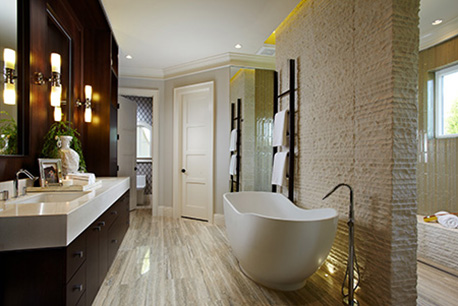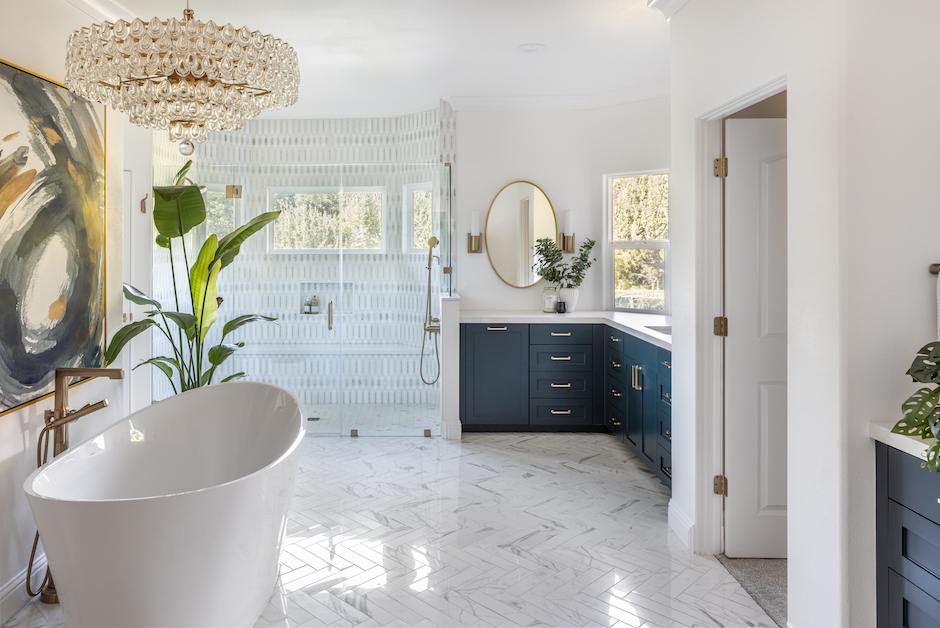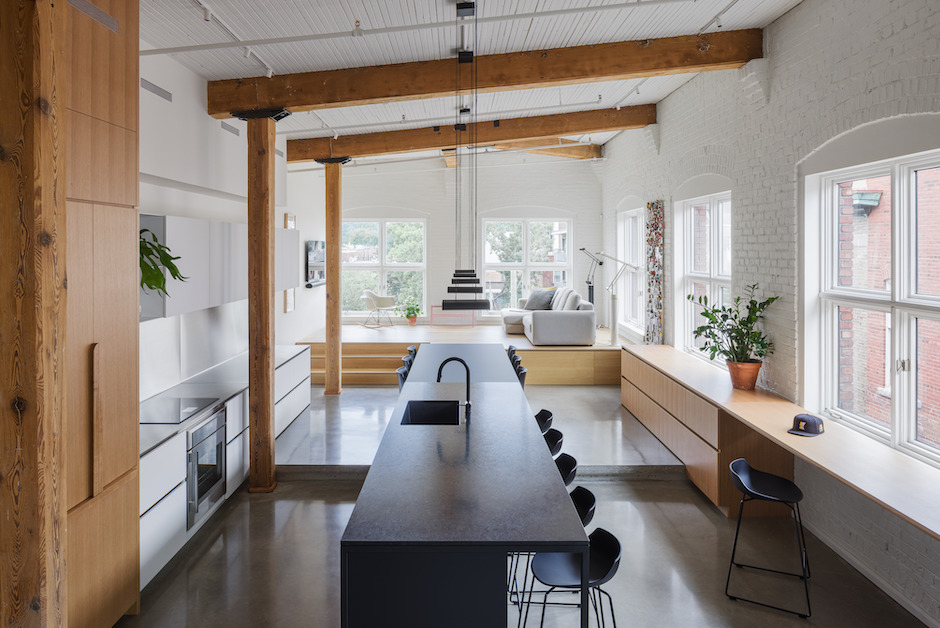
August 12, 2013
Design elements in the master bathroom of the Castaway III house include limestone vanities, travertine flooring, walnut cabinetry and high-gloss-painted glass shower tiles.
The Castaway III, the first model home of four in the Tampa Bay area built by Marc Rutenberg Homes’ Zero Energy America project, is LEED platinum certified and is the epitome of zero energy and extreme green building. K+BB had the opportunity to talk to the interior designer – Marc Thee, principal designer and co-founder of Marc-Michaels Interior Design – about the master bathroom of this 4,552-sq.-ft. house.
According to Thee, one of the main features that makes this master bathroom stand out is the contrast in the color palette – mixing darks with lights. Another is that while a lot of new products were introduced in the space, each one stands on its own and is not combined with others in elaborate ways. Thee also believes in something he refers to as “moment design” – pick one moment and use it in a space.
“If every vista and sightline is a moment, you will end up with a bathroom where your eyes are constantly bouncing around with no place to rest,” he said.
The “moment design” in this master bath was created with a tub wall – chiseled stone that disappears into a recessed cove where the wall separates the tub from the shower and creates a “wow” factor. Thee says everything else fell into place after that moment and that the design embraces an overall adult-oriented serenity.

The Castaway III house in Tampa Bay, Fla., embraces zero energy and extreme building practices.
Supporting Elements
Recessed well lighting in the floor creates a dramatic effect with the light shining upward. Narrow spotlighting creates the progression of space as you move around it.
“I love dramatic lighting and preach spotlighting over floodlighting every day,” said Thee. “I love pools of light that create mood and shadow and lights and darks – not overall flat lighting.”
The sustainable cabinetry in the master bath is walnut, and a vein-cut silver travertine was used for the flooring – a natural material with an organic, linear feel that leads the eye down the length of the space.
“With a linear space, some people want to counterbalance it, and I believe in celebrating it,” said Thee. “If you have a narrow, long space, emphasize it. Show courage and own it – do not apologize for a space.”
The shower tile, which is a high-gloss-painted glass, mixes well with the natural materials in the bathroom.
“Spaces can fall flat quickly,” said Thee, “and the shower was where we brought the bling, the gloss, the contrast. When choosing materials, you need to have a little spice as well.”
A double vanity made of limestone was designed with two types of lighting – face-forward lighting combined with downlights. From one sink, the homeowner can easily reach one of the locker-style, tower cabinets, and everything is within reach.

The freestanding, vessel tub is separated from the shower by a disappearing textured wall that creates a “wow” factor in the space.
A vessel tub completes the space. It fills up quickly and forms to the body’s shape – your feel able to hit the other end.
“Huge tubs are a design dump to me,” added Thee. “I love the way this tub feels like a collected item – a sculpture. It’s like a beautiful piece of furniture.”
Design Lessons
One lesson Thee has learned throughout his career is learning to show some restraint in the design. Some examples of this in the Castaway III master bath were exercised with the tub and the flooring.
Originally, the tub was nestled into a bed of natural pebble, and the design team decided it didn’t need to be. They were also going to checkerboard the travertine flooring but decided to use some restraint instead.
“You are always wanting to add detail and embellishment, and it’s hard to know where to draw the line,” he said, “but some of our best designs have been when someone in the room finally says ‘enough.’”


